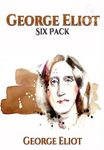20 books
-
1. The Mill on the Floss
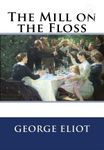
The Mill on the Floss tells the devastating story of young Maggie Tulliver, and how her struggles against the constraints of her community nearly destroy her relationship with her beloved brother Tom. The novel spans a period of ten to fifteen years and details the lives of the two siblings growing up at Dorlcote Mill on the River Floss at its junction with the more minor River Ripple near the English village of St. Ogg"s in Lincolnshire. Like other novels by George Eliot, The Mill on the Floss articulates the tension between circumstances and the spiritual energies of individual characters struggling against those circumstances.
-
2. Middlemarch
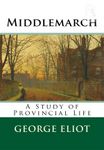
The grand, sprawling epic that is Middlemarch is about many things. It is about social and political reform. But it"s also a novel about love and marriage. And about trying and failing. And about second chances. It boasts multiple plots with a large cast of characters, and in addition to its distinct though interlocking narratives it pursues a number of underlying themes, including the status of women, the nature of marriage, idealism and self-interest, religion and hypocrisy, political reform, and education. The pace is leisurely, the tone is mildly didactic (with an authorial voice that occasionally bursts through the narrative), and the canvas is very broad. At the story’s center stands the intellectual and idealistic Dorothea Brooke—a character who in many ways resembles Eliot herself. But the very qualities that set Dorothea apart from the materialistic, mean-spirited society around her also lead her into a disastrous marriage with a man she mistakes for her soul mate. In a parallel story, young doctor Tertius Lydgate, who is equally idealistic, falls in love with the pretty but vain and superficial Rosamund Vincy, whom he marries to his ruin. Eliot surrounds her main figures with a gallery of characters drawn from every social class, from laborers and shopkeepers to the rising middle class to members of the wealthy, landed gentry. Together they form an extraordinarily rich and precisely detailed portrait of English provincial life in the 1830s. But Dorothea’s and Lydgate’s struggles to retain their moral integrity in the midst of temptation and tragedy remind us that their world is very much like our own. Strikingly modern in its painful ironies and psychological insight, Middlemarch was pivotal in the shaping of twentieth-century literary realism.
-
4. Daniel Deronda

Daniel Deronda is a novel by George Eliot, first published in 1876. It was the last novel she completed and the only one set in the contemporary Victorian society of her day. The work"s mixture of social satire and moral searching, along with its sympathetic rendering of Jewish proto-Zionist ideas, has made it the controversial final statement of one of the most renowned of Victorian novelists. The novel has been adapted for film three times, once as a silent feature and twice for television. It has also been adapted for the stage, notably in the 1960s by the 69 Theatre Company in Manchester with Vanessa Redgrave cast as the heroine Gwendolen Harleth. Mary Ann Evans (22 November 1819 – 22 December 1880; alternatively Mary Anne or Marian), known by her pen name George Eliot, was an English novelist, poet, journalist, translator and one of the leading writers of the Victorian era. She wrote seven novels, Adam Bede (1859), The Mill on the Floss (1860), Silas Marner (1861), Romola (1862–63), Felix Holt, the Radical (1866), Middlemarch (1871–72) and Daniel Deronda (1876), most of which are set in provincial England and known for their realism and psychological insight.
-
6. Middlemarch
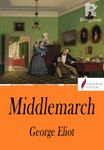
Middlemarch, A Study of Provincial Life is a novel by the English author George Eliot (Mary Anne Evans), appearing in eight instalments (volumes) in 1871 and 1872. Set in a fictitious Midlands town from 1829 to 1832, it follows distinct, intersecting stories with many characters. Issues include the status of women, the nature of marriage, idealism, self-interest, religion, hypocrisy, political reform, and education. Despite comic elements, Middlemarch uses realism to encompass historical events: the 1832 Reform Act, early railways, and the accession of King William IV. It views contemporary medicine and examines reactionary views in a settled community facing unwelcome change. Eliot began writing the two pieces that would form the novel in 1869–1870 and completed it in 1871. Initial reviews were mixed, but it is now seen widely as her best work and one of the great novels in English. Mary Ann Evans (22 November 1819 – 22 December 1880; alternatively Mary Anne or Marian, known by her pen name George Eliot, was an English novelist, poet, journalist, translator and one of the leading writers of the Victorian era. She wrote seven novels, Adam Bede (1859), The Mill on the Floss (1860), Silas Marner (1861), Romola (1862–63), Felix Holt, the Radical (1866), Middlemarch (1871–72) and Daniel Deronda (1876), most of which are set in provincial England and known for their realism and psychological insight.
-
7. The Mill on the Floss
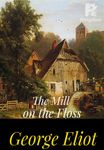
The Mill on the Floss by George Eliot. Drawing on George Eliot's own childhood experiences to craft an unforgettable story of first love, sibling rivalry and regret, Brought up at Dorlcote Mill, Maggie Tulliver worships her brother Tom and is desperate to win the approval of her parents, but her passionate, wayward nature and her fierce intelligence bring her into constant conflict with her family. As she reaches adulthood, the clash between their expectations and her desires is painfully played out as she finds herself torn between her relationships with three very different men: her proud and stubborn brother; hunchbacked Tom Wakem, the son of her family's worst enemy; and the charismatic but dangerous Stephen Guest. With its poignant portrayal of sibling relationships, The Mill on the Floss is considered George Eliot's most autobiographical novel; it is also one of her most powerful and moving.
-
8. Silas Marner

In the days when the spinning-wheels hummed busily in the farmhouses—and even great ladies, clothed in silk and thread-lace, had their toy spinning-wheels of polished oak—there might be seen in districts far away among the lanes, or deep in the bosom of the hills, certain pallid undersized men, who, by the side of the brawny country-folk, looked like the remnants of a disinherited race. The shepherd's dog barked fiercely when one of these alien-looking men appeared on the upland, dark against the early winter sunset; for what dog likes a figure bent under a heavy bag?—and these pale men rarely stirred abroad without that mysterious burden. The shepherd himself, though he had good reason to believe that the bag held nothing but flaxen thread, or else the long rolls of strong linen spun from that thread, was not quite sure that this trade of weaving, indispensable though it was, could be carried on entirely without the help of the Evil One. In that far-off time superstition clung easily round every person or thing that was at all unwonted, or even intermittent and occasional merely, like the visits of the pedlar or the knife-grinder. No one knew where wandering men had their homes or their origin; and how was a man to be explained unless you at least knew somebody who knew his father and mother? To the peasants of old times, the world outside their own direct experience was a region of vagueness and mystery: to their untravelled thought a state of wandering was a conception as dim as the winter life of the swallows that came back with the spring; and even a settler, if he came from distant parts, hardly ever ceased to be viewed with a remnant of distrust, which would have prevented any surprise if a long course of inoffensive conduct on his part had ended in the commission of a crime; especially if he had any reputation for knowledge, or showed any skill in handicraft. All cleverness, whether in the rapid use of that difficult instrument the tongue, or in some other art unfamiliar to villagers, was in itself suspicious: honest folk, born and bred in a visible manner, were mostly not overwise or clever—at least, not beyond such a matter as knowing the signs of the weather; and the process by which rapidity and dexterity of any kind were acquired was so wholly hidden, that they partook of the nature of conjuring. In this way it came to pass that those scattered linen-weavers—emigrants from the town into the country—were to the last regarded as aliens by their rustic neighbours, and usually contracted the eccentric habits which belong to a state of loneliness.
-
9. Silas Marner The Weaver of Raveloe

Silas Marner: The Weaver of Raveloe by George Eliot. Silas Marner is a simple weaver living a reclusive life is a village in the south of England. Falsely accused of theft, he has fled the home of his ancestors. Renounced by his bride-to-be and his former friends, he turns to a singular purpose—the accumulation of gold. Though the earnings from his trade are small, over time his fortune grows. And suddenly his life’s path is altered dramatically. In a short space of time, his gold is stolen and another treasure is discovered. A child appears at his doorstep. Her opium-addicted mother is found dead, and Silas takes the child in as his own. Life has new meaning—true purpose. Years pass. Then, just as suddenly, he and his beloved Eppie are dealt a stunning blow! Her realism is relieved, as in actual life, by love, helpfulness and pathos; by deep sorrow, sufferings patiently borne, and tender sympathy for others' woes.
-
10. Silas Marner
The Weaver of Raveloe. (1861) Exiled by superstition and betrayal from Lantern Yard, and cut off from faith and human love, for fifteen years the solitary simple-hearted weaver Silas Marner has plied his loom in Raveloe and devoted himself to the amassing of a hoard of golden guineas. Silas's chance of redemption, when it appears one New Year's Eve, is intimately connected with the fate of Godfrey Cass, son of the village Squire. Clandestinely married, then blackmailed by his dissolute brother Dunstan, Godfrey like Silas has been trapped by his past, from which he is seeking to escape. Humorous, richly symbolic, subtly characterized and meticulously plotted, George Eliot's 'sudden inspiration' in this slim novel of rural England cut across her plans for Romola, her vast Italian Renaissance epic. -- Silas marner is about a man you was framed by his best friend. He was accused of robbing money from the church. He left his home town and went to a new one where he becomes the medicine man and makes a lot of money. His money was stolen fron him one night while he was out and the town tries to help him. One day a little girl finds his house and after discovering that her mother is dead he takes her in. 16 years later he goes back to his home town to clear his name.--Submitted by Jonathan Murphy.
-
11. Daniel Deronda
(1876) Let thy chief terror be of thine own soul: There, 'mid the throng of hurrying desires That trample on the dead to seize their spoil, Lurks vengeance, footless, irresistible As exhalations laden with slow death, And o'er the fairest troop of captured joys Breathes pallid pestilence. ~ For anyone who enjoys reading long books, Daniel Deronda is a wonderful read. It is amazing that this writer had to pose as a man in order for her books to be accepted. She comments on social conditions, particularly in the upper classes of 19th century England. Disgusted at the way Jews were treated she set herself to the task of finding out as much as she could about the Jewish religion before and while writing this book. She then does much to overturn commonly held views that Jews were inferior to other races. In her writing she espouses the cause of a Jewish homeland long before the advent of Zionism, the birth of Hertzl, and even before Lord Lionel Rothschild was able to swear a Jewish oath in Parliament, rather than a Christian oath. One will have many happy hours reading this book.--Submitted by Marilyn Delevante ~
-
12. Felix Holt
The Radical (1866) Upon the midlands now the industrious muse doth fall, The shires which we the heart of England well may call. My native country thou, which so brave spirits hast bred, If there be virtues yet remaining in the earth, Or any good of thine thou bred'st into my birth, Accept it as thine own, whilst now I sing of thee, Of all thy later brood the unworthiest though I be. --Drayton; Polyolbion
-
13. The Mill on the Floss
(1860) The most autobiographical of Eliot's works. As Maggie Tulliver approaches adulthood, her spirited temperament brings her into conflict with her family, her community, and her much-loved brother Tom. Still more painfully, she finds her own nature divided between the claims of moral responsibility and her passionate hunger for self-fulfillment. ~
-
14. Middlemarch
(1871-2) Dorothea Brooke, a young woman of impeccable character, marries the embittered Mr. Casaubon, who almost immediately dies. Eliot takes the reader through a labyrinth of nineteenth-century morals and conventions as Dorothea searches for fulfillment and happiness. ~ What is wonderful about George Eliot's Middlemarch is that she translates her previous fables (Silas Marner, The Mill on the Floss) into the fates of an entire community. The clashes of different fates are like the War of the Worlds, in her massive morality.--Submitted by Anonymous.
-
16. Adam Bede
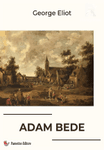
Adam Bede is the first novel by the English author George Eliot, published in 1859. It is set in the rural community of Hayslope in 1799, and it tells the story of a young carpenter named Adam Bede and his love for a young woman named Hetty Sorrel.George Eliot is the pen name of Mary Ann Evans, a prominent English novelist, poet, and journalist who lived from 1819 to 1880. She is one of the most important figures in Victorian literature, and her works are celebrated for their psychological realism, complex characters, and social commentary.Some of her most famous works include "Adam Bede," "The Mill on the Floss," "Silas Marner," and "Middlemarch." Her novels often explore themes such as the role of women in society, the conflicts between individual desires and societal expectations, and the tensions between science and religion.Eliot was also known for her unconventional personal life. She lived with the philosopher and critic George Henry Lewes for over 20 years, despite the fact that Lewes was still married to his estranged wife. Eliot's relationship with Lewes and her rejection of conventional morality often drew criticism from Victorian society, but her literary achievements ultimately secured her place as one of the greatest writers of her time.
-
17. Adam Bede
(1859) Eliots view of human nature is complex. She does not preach, and she does not offer flat characters with whom it is impossible to sympathize. Instead, she offers real characters, whose motivations are sympathetic even when the motivations are tainted. Throughout the Adam Bede novel, assessments against another persons negative actions are a condemning aim of the novel, e.g., Adam is at times able to see his own failings but is frustrated in attempts to correct them. Eliot contrasts the inner and outer beauty of the characters by portraying that external beauty may be more recognizable and superficially preferred to inner beauty, but it obviously is not the most desirable. This is made clear with Hettys lack of individual goodness; she is the more physically beautiful and those around her are often fooled or blinded by her appealing looksHettys true personality is that of inner ugliness. Adam, however, wrongly assumes she is a good person because of her appearance. The contrasting feelings for Dinah are more real because of being drawn in not only by beauty, but more importantly, by her inner character. Interestingly, at a party, the vain Hetty flirts with Adam because she knows Mary Burge, who loves Adam, is watching them; Hetty is actually only interested with the flashy Captain Donnithorne. Adam is miserable at the thought that she might have the Captain as a secret lover. At this coming-of age-party it brings into sharp focus the class questions that permeates life in Hayslope. The party also displays the main characters in their moments of innocence. Hettys eventual disgrace will shock the world of HayslopeIll let you figure it out. Eliot continually discredits those members of the artificial nobility who deride the simple pleasures of the lower classes. The party gathering is a microcosm of everything distasteful about class prejudice; however, the empathy of the novel lies with the common people. In fact, the narrator encourages people to enjoy lifes simpler pleasures and not turn their noses up at characters or people just because they are of a lower class. Eliot is concerned and bothered with the many obvious external phoniness that presents appearances without substance or significance; she contrasts this shallowness with the individuals lack of inner virtues that penetrate below the surface. Human nature is seen as a quintessence of the world or the universe. We are not all alike! ~ Submitted by Egil Steinar Smedvig
